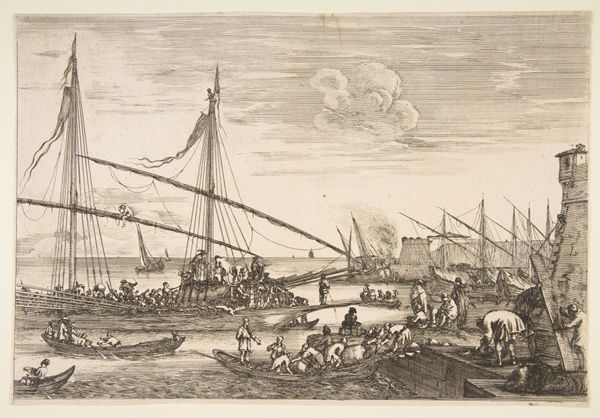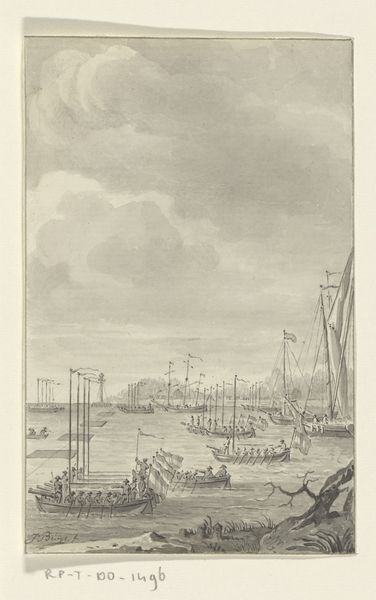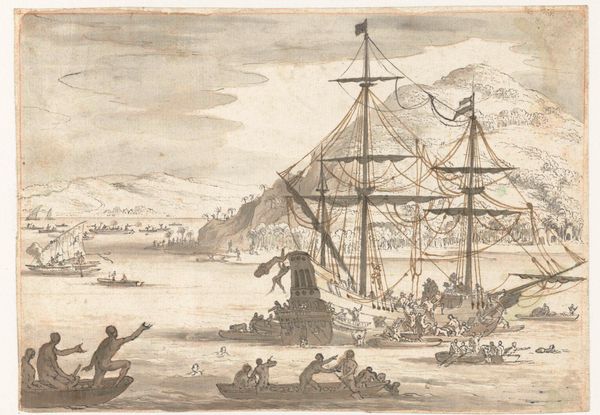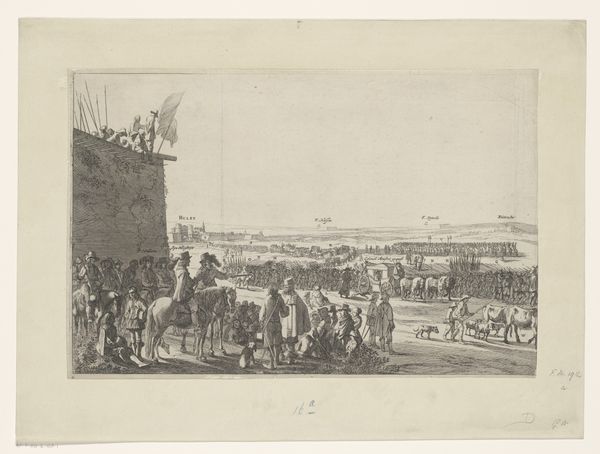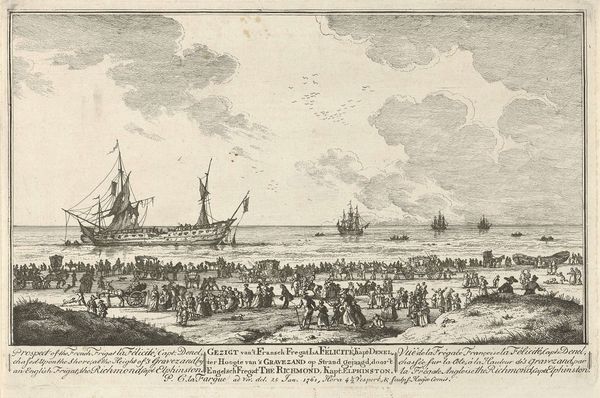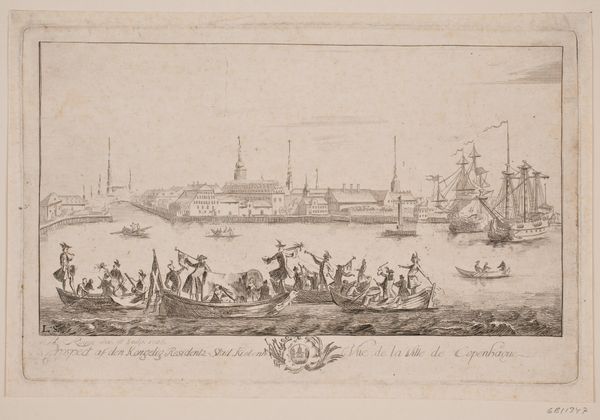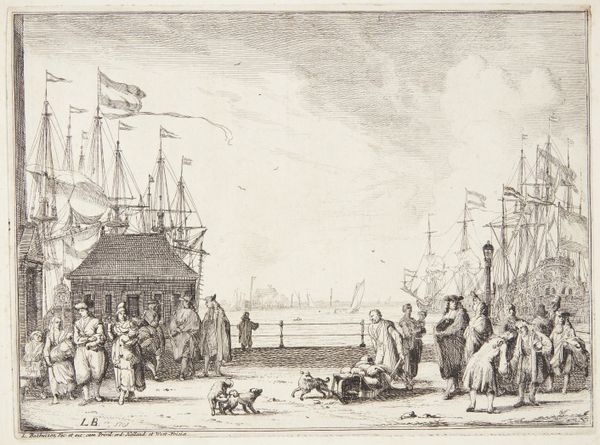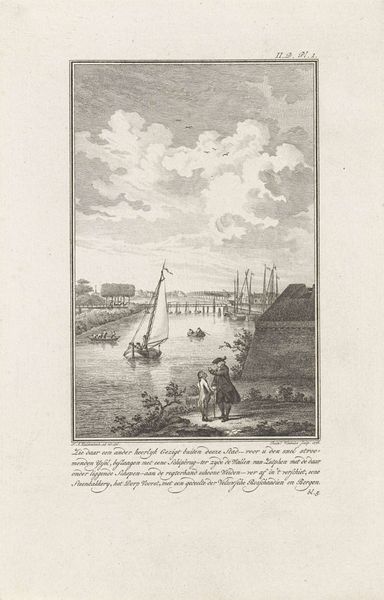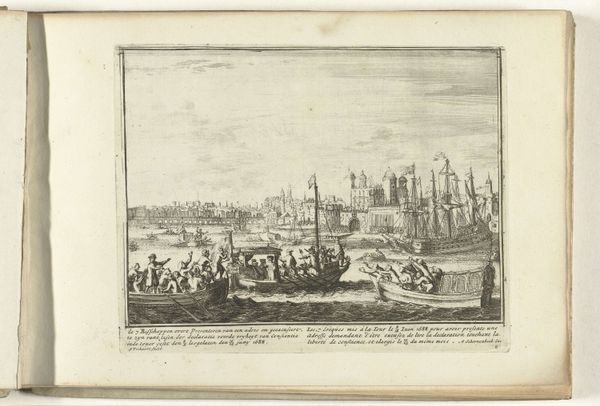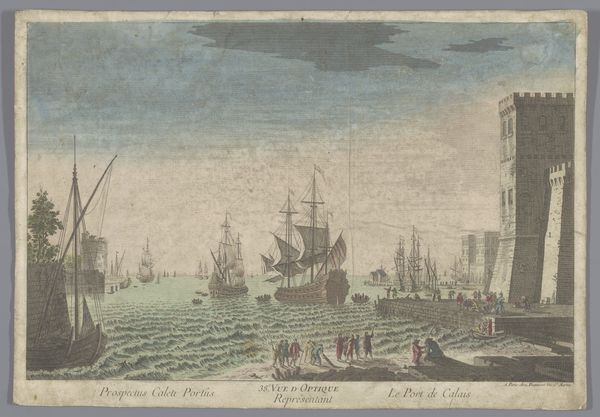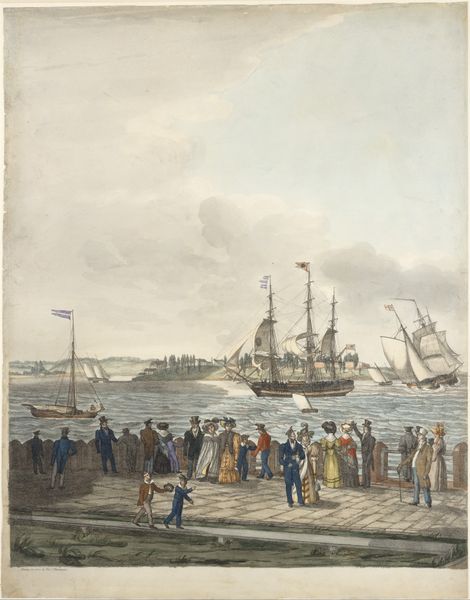
print, engraving
#
narrative-art
#
baroque
#
dutch-golden-age
# print
#
pen sketch
#
old engraving style
#
cityscape
#
history-painting
#
engraving
Dimensions: height 190 mm, width 141 mm
Copyright: Rijks Museum: Open Domain
Curator: Let’s turn our attention to this 1689 engraving currently housed here at the Rijksmuseum, “Willem III vertrekt met de vloot naar Engeland, 1688”—or, William III Departs with the Fleet to England, 1688. It’s by an anonymous artist and captures a rather momentous occasion. Editor: It's certainly busy! So many lines and figures; it evokes a sense of bustling activity, like looking into a teeming anthill, even through the visual constraints of this black-and-white print. Curator: Observe the composition, if you will. The artist uses a high vantage point, compressing a vast fleet and thronging crowd into a relatively small picture plane. Notice how the lines direct the eye from the foreground revelry toward the ships on the horizon. The depth and receding scale certainly gives this flat engraving dynamism. Editor: Absolutely. It’s interesting to view this through a postcolonial lens, though. William's departure, or rather, invasion of England, was seen as a monumental moment of liberation by some. But the engraving downplays the cost to colonized nations of European squabbles for power and dominion across the globe. Curator: Your perspective highlights how visual culture reinforces particular narratives. What strikes me are the textural details achieved with simple etched lines. The clouds are rendered as delicately as the agitated sea or the flags. There's an impressive uniformity of visual language. Editor: Agreed, though let's also not overlook the faces in the foreground. The clear revelry in their body language underscores popular support, obscuring dissenting voices, women and colonized populations left out of the dominant narrative of a male saviour claiming his throne. This heroic rendering of a pivotal historical moment warrants interrogation and critique. Curator: Well, our quick study highlights different ways to perceive and analyze such artwork! Both form and context, working in tandem, greatly enriches our visual experience and knowledge of the artwork. Editor: Indeed, to engage with it thoughtfully means not just admiring the artist's handiwork, but understanding the impact on countless lives erased and distorted by dominant viewpoints across time.
Comments
No comments
Be the first to comment and join the conversation on the ultimate creative platform.

